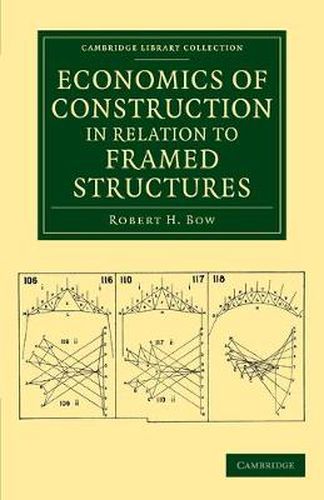Readings Newsletter
Become a Readings Member to make your shopping experience even easier.
Sign in or sign up for free!
You’re not far away from qualifying for FREE standard shipping within Australia
You’ve qualified for FREE standard shipping within Australia
The cart is loading…






From the 1850s onwards, the civil engineer Robert Henry Bow (1827-1909) became known for his expertise in structural analysis, publishing on the design of bridge and roof trusses, and working with the prolific railway engineer Sir Thomas Bouch (of later Tay Bridge infamy). In the first part of this 1873 publication, Bow describes 337 different truss structures, grouping them into four classes according to their structural characteristics: statically determinate, kinematically determinate, indeterminate, and other. In the second part, he describes a method for graphically analysing truss structures, based on the work of Thomas Maxwell and others, and applies this method to the structures listed in the first part. Perhaps of most interest to the working engineer are the explanations as to which structures are most efficient given typical material constraints, such as girders of uniform cross-section. The work remained a useful resource for practising engineers well into the twentieth century.
$9.00 standard shipping within Australia
FREE standard shipping within Australia for orders over $100.00
Express & International shipping calculated at checkout
From the 1850s onwards, the civil engineer Robert Henry Bow (1827-1909) became known for his expertise in structural analysis, publishing on the design of bridge and roof trusses, and working with the prolific railway engineer Sir Thomas Bouch (of later Tay Bridge infamy). In the first part of this 1873 publication, Bow describes 337 different truss structures, grouping them into four classes according to their structural characteristics: statically determinate, kinematically determinate, indeterminate, and other. In the second part, he describes a method for graphically analysing truss structures, based on the work of Thomas Maxwell and others, and applies this method to the structures listed in the first part. Perhaps of most interest to the working engineer are the explanations as to which structures are most efficient given typical material constraints, such as girders of uniform cross-section. The work remained a useful resource for practising engineers well into the twentieth century.